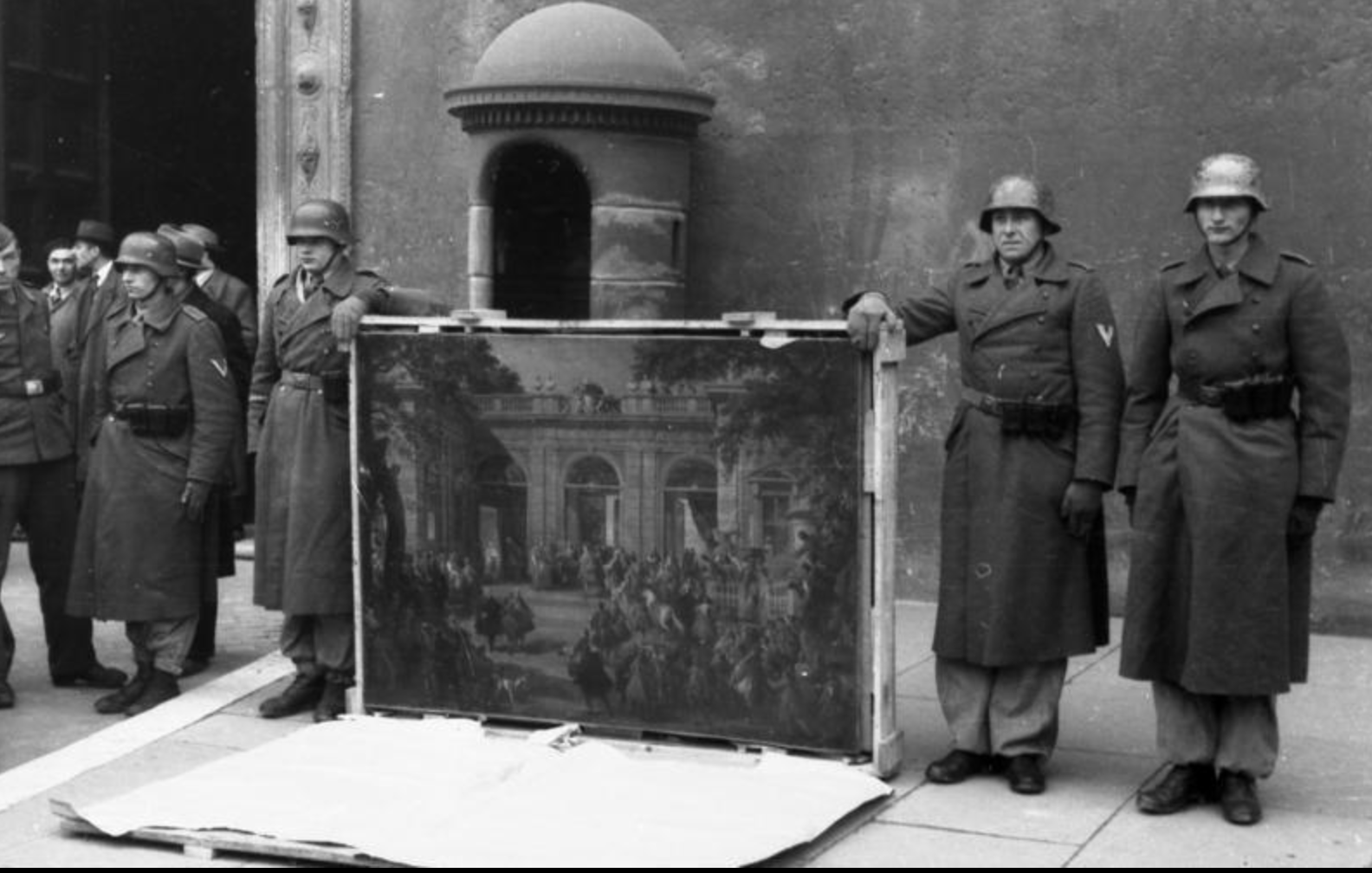
Rome, Italy, 4 January 1944. German soldiers posing with looted art.
~Artland magazine
In 1940, Hitler ordered all Jewish art collections to be confiscated and deemed "ownerless" by Nazi decree. Jews in most of Europe were now labeled "stateless" and no longer had property rights.
"All of this accumulated Beauty had been stolen by the most murderous thieves that ever existed on the face of the Earth. How they could retain the nicety of appreciation of great Art and be exterminating millions of people nearby in concentration camps, I couldn't understand then and I can't understand today."
~Dr. Leonard Malamut, 11th Armored Division

Rome, Italy, 4 January 1944. German soldiers posing with looted art.
~Artland magazine
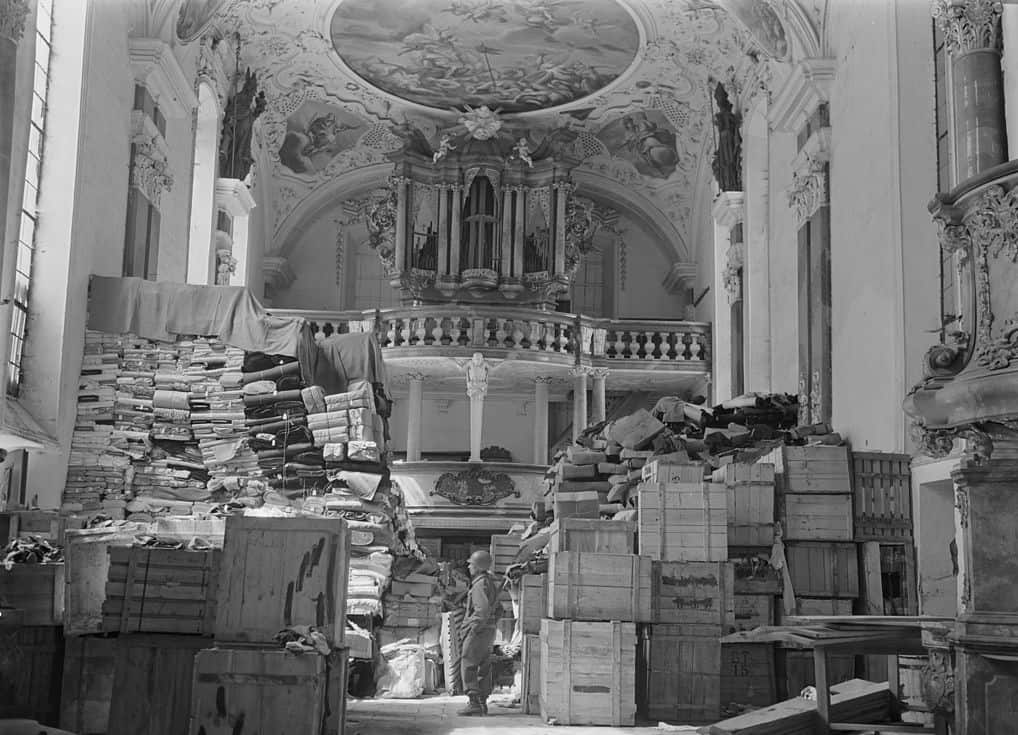
A German loot stored at Schlosskirche, Bavaria (April 1945)
~Artland magazine
"I called that chapter in my book, The Barbarians of Culture."
Personal interview with United States Ambassador to the European Union, Stuart Eizenstat, ~Gorden, May 9, 2025
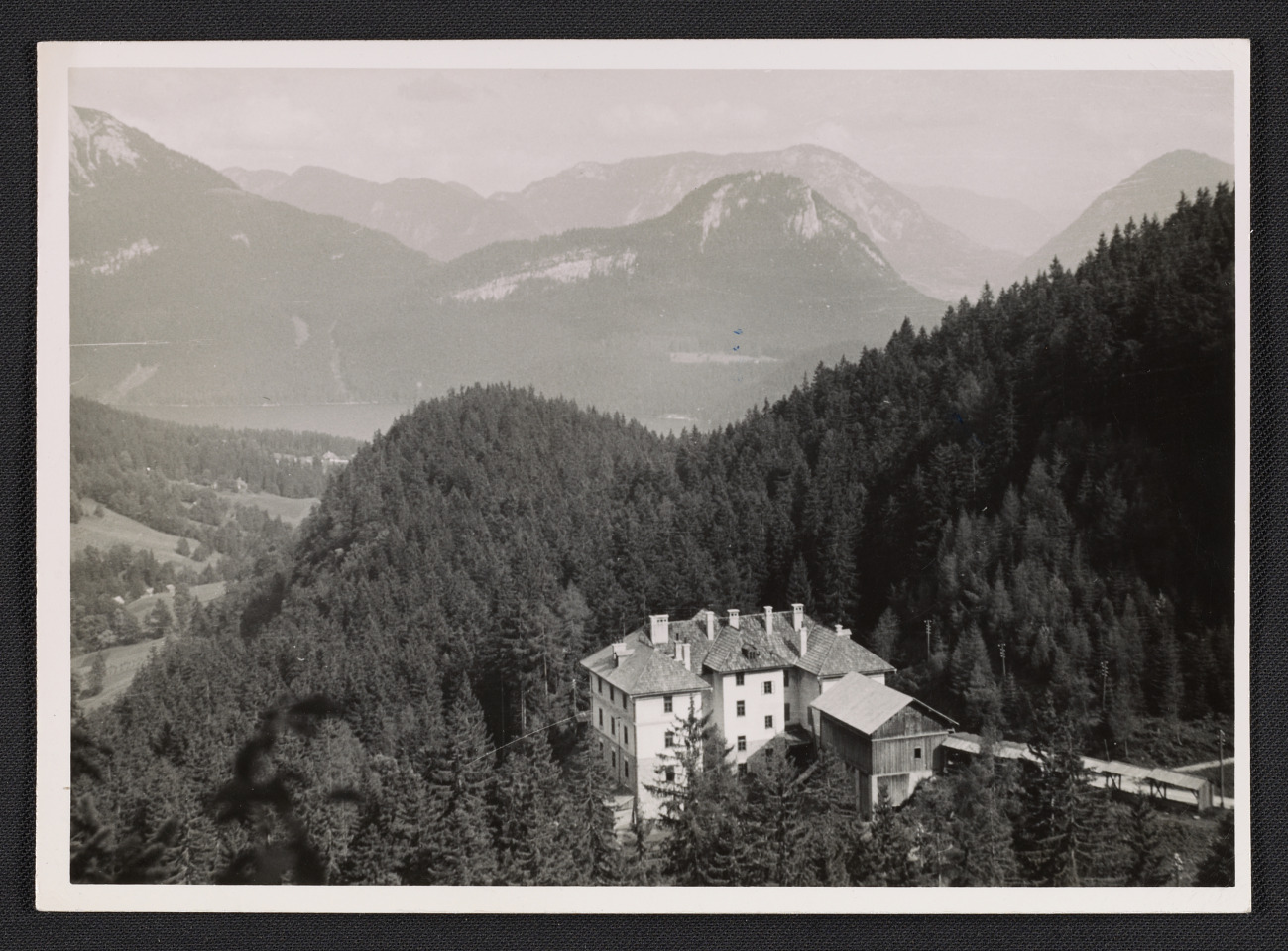
Aerial view of the Altaussee salt mines, 1945
~Smithsonian Archives of American Art
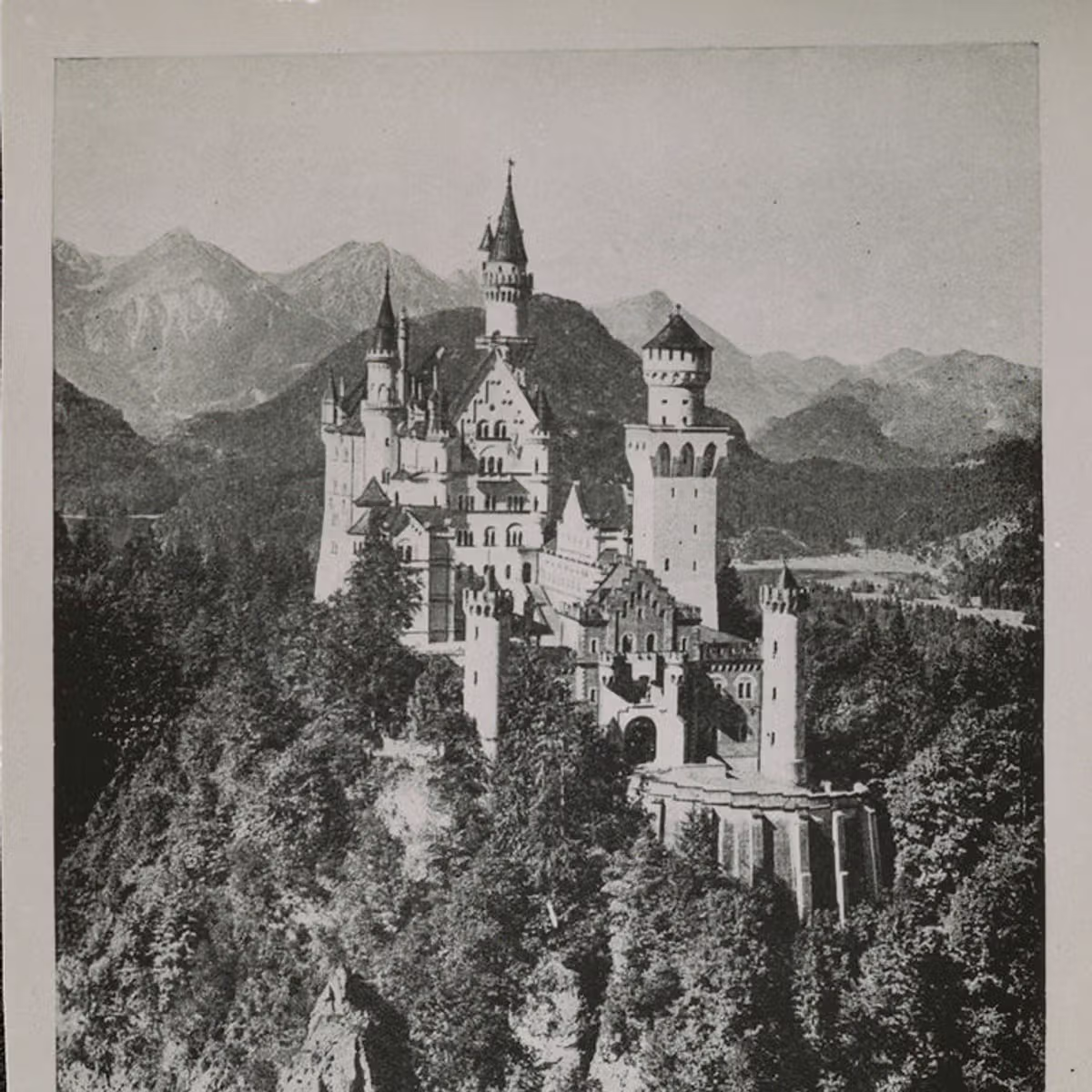
Neuschwanstein Castle
~Metropolitan Museum of Art
The Einsatzstab Reichsleiter Rosenberg (ERR), a Nazi task force led by Alfred Rosenberg, was established in 1940 to plunder thousands of artworks and cultural treasures from Nazi-occupied territories. The ERR created numerous art repositories, such as the one at Neuschwanstein, to store looted art.
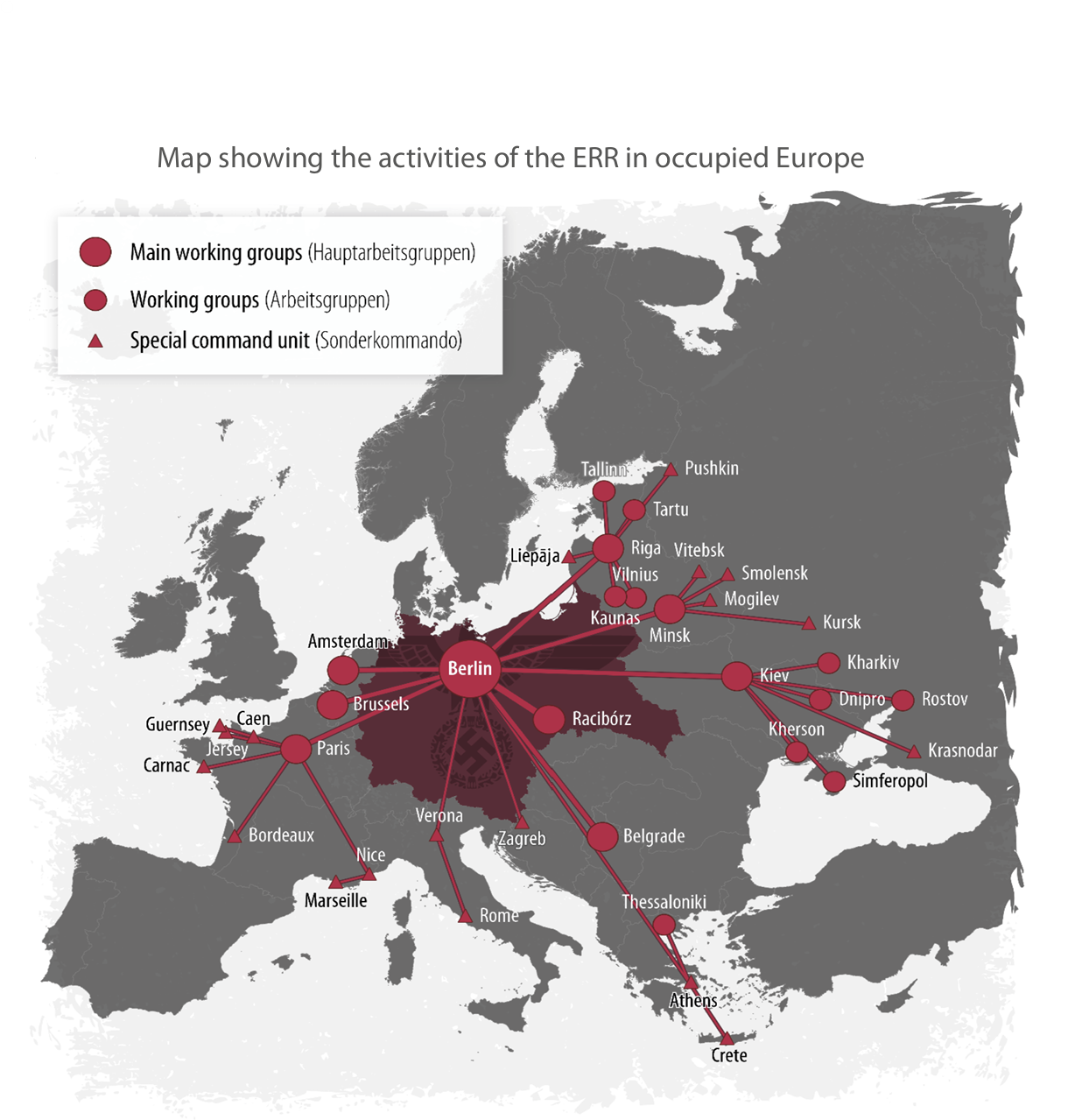
~Yad Vashem Photo Archives
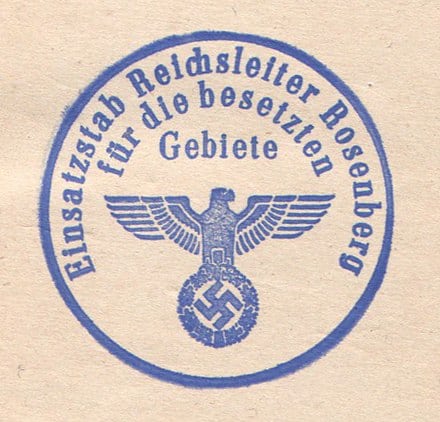
Official Seal of the ERR ~Yad Vashem Photo Archives
“The ERR ran operations in France, Belgium, Norway, Denmark, Holland, Italy, Greece, and the Balkans, the Baltic states and the U.S.S.R. Poland was particularly hard hit.” ~Military History Now
They meticulously catalogued the stolen pieces with photographs and records.
The list of more than 16,000 artworks was produced by the Reichsministerium für Volksaufklärung und Propaganda (Reich Ministry for Public Enlightenment and Propaganda) in 1942 or thereabouts. It seems that the inventory was compiled as a final record, after the sales and disposals of the confiscated art had been completed in the summer of 1941. The inventory's two typescript volumes provide crucial information about the provenance, exhibition history and fate of each artwork. ~vam.ac.uk
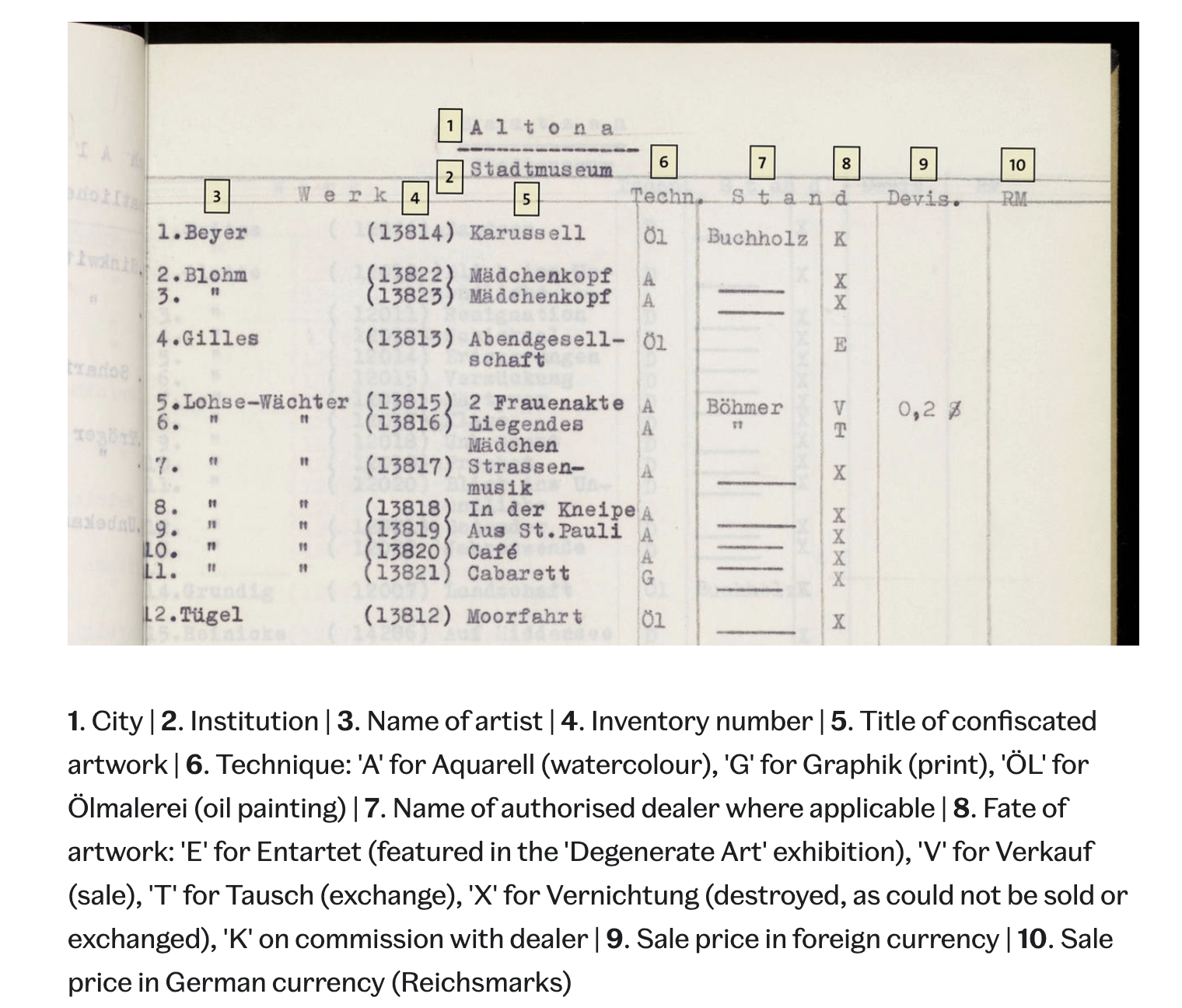
Entartete Kunst, vol. 1: Aachen to Görlitz, compiled by the Ministry for Propaganda, Germany, about 1941 – 42,
~Museum no. MSL/1996/7/1, p. 25. © Victoria and Albert Museum, London
“In all, more than 1.4 million railroad cars worth of booty were looted from museums, galleries and private collections – as much as 20 percent of all of Europe’s art.”
~Military History Now
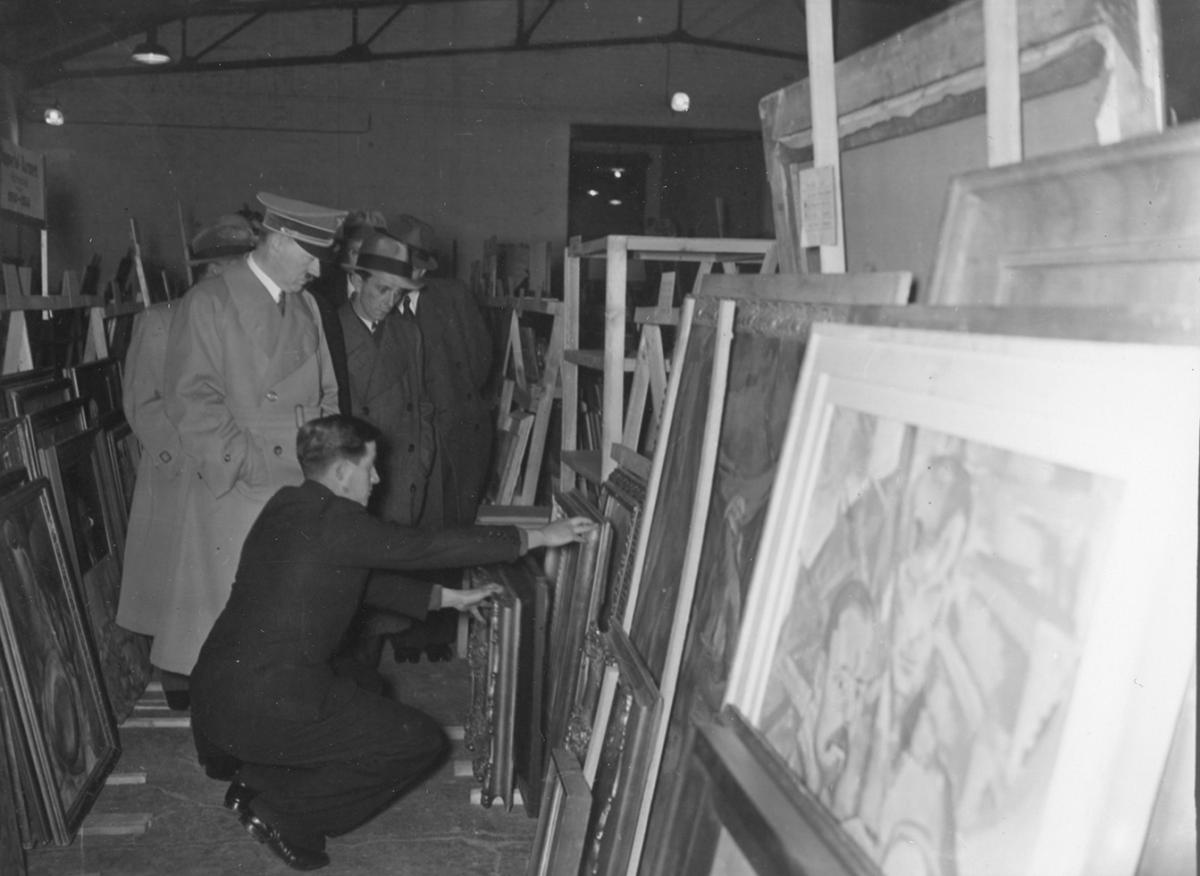
Artworks that were confiscated and collected for Hitler.
~National Archives
After the war, Rosenberg was tried before the International Military Tribunal at Nuremberg. Following his conviction, he was hanged in Nuremberg on October 16, 1946. ~National Archives
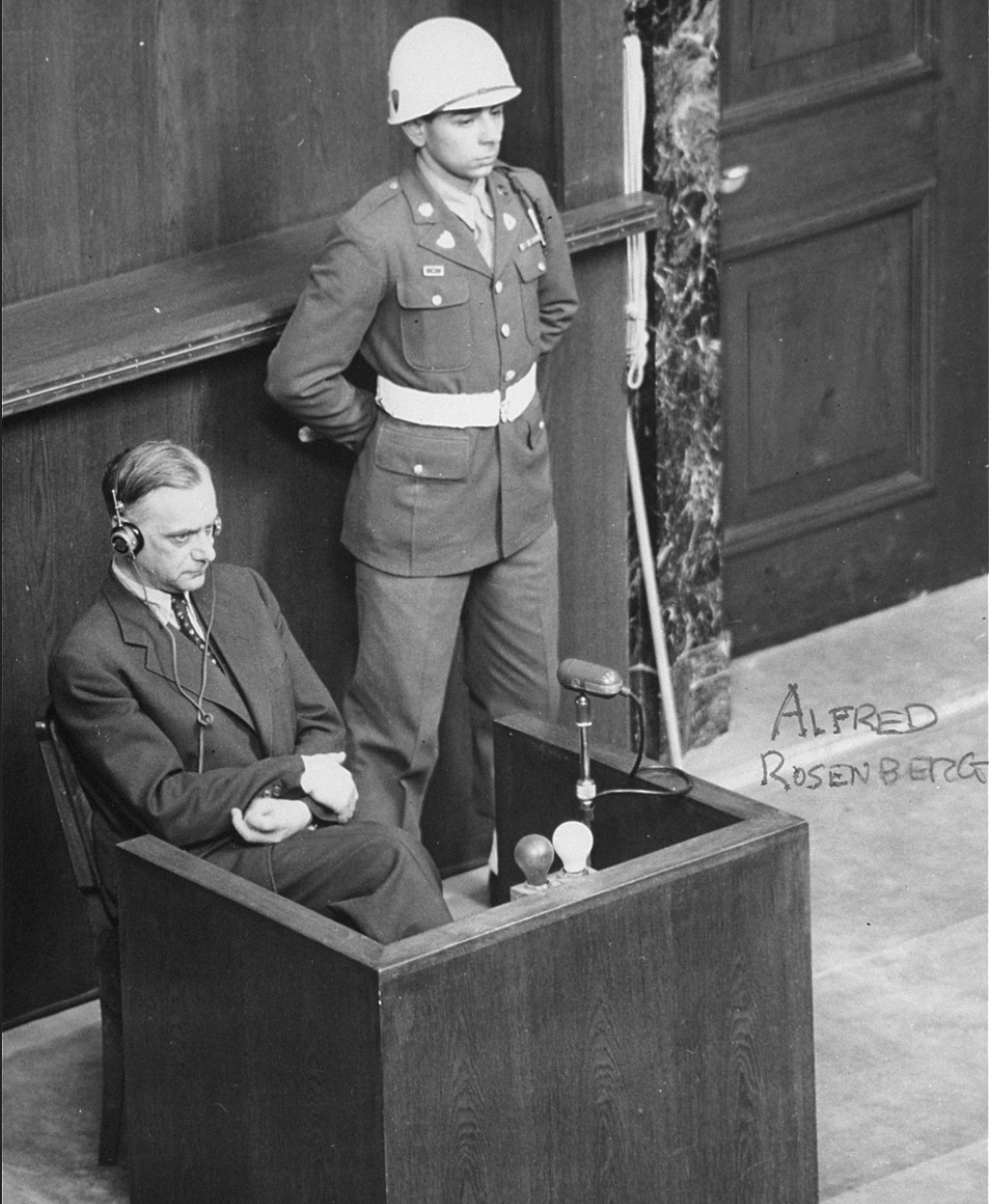
Former Nazi Party ideologist Alfred Rosenberg in the witness box at the International Military Tribunal war crimes trial at Nuremberg.
~National Archives
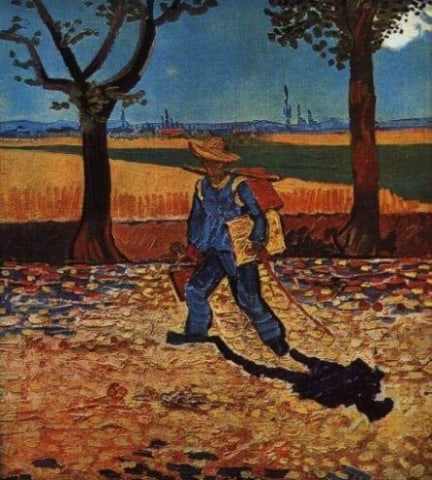
The Painter on the Road to Tarascon by Vincent Van Gogh
~History Collection
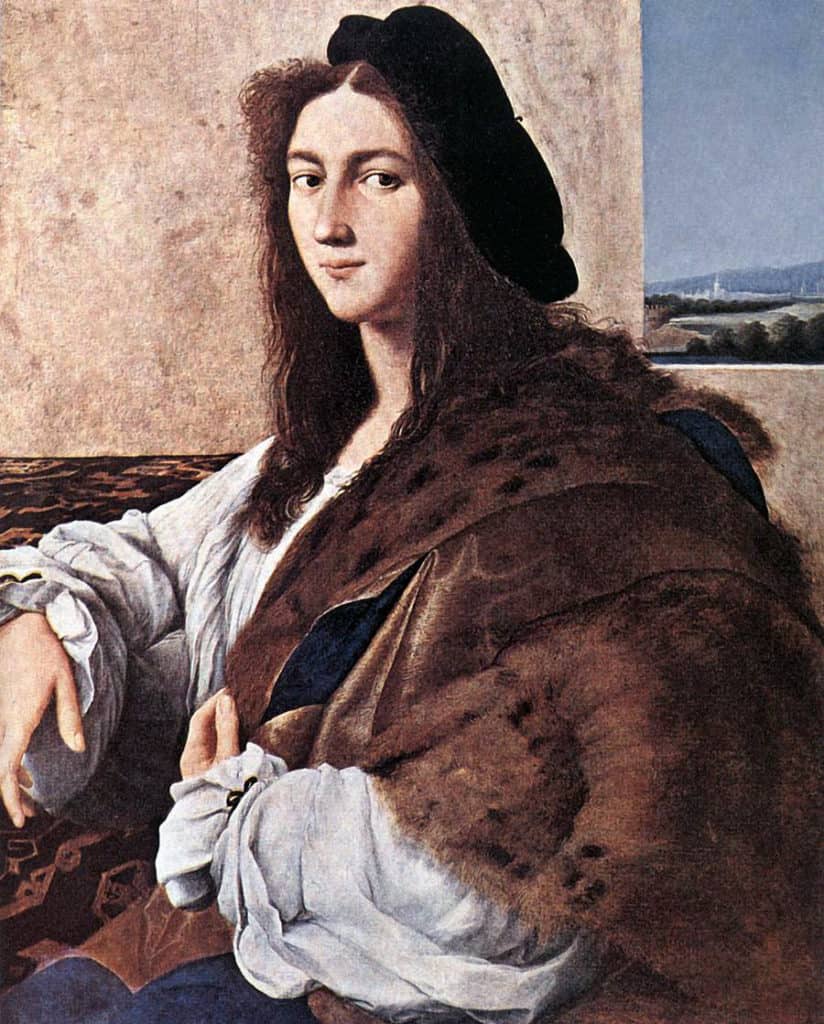
Portrait of a Young Man by Raphael
~History Collection
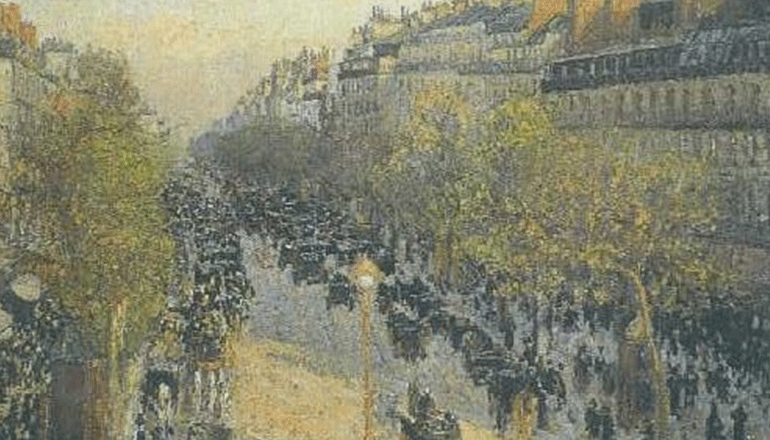
The Boulevard Montmartre at Twilight by Camille Pissarro
~History Collection